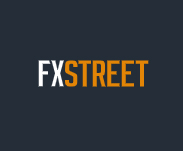US Dollar flat as traders eye PMI and tariff fallout

- The DXY trades near 104.30 with muted interest despite broader risk-off flows in markets.
- Focus shifts from tariffs to data with recession fears weighing more than trade threats.
- Key resistance is seen near 104.47, while support clusters just under the 104.00 handle.
The US Dollar Index (DXY), which measures the value of the US Dollar against a basket of currencies, trades flat on Monday and sees limited directional flow, hovering near 104.30. Despite equities tumbling and Gold hitting fresh highs above $3,100, the Greenback remains sidelined. Traders appear more focused on economic signals than trade tensions with Monday’s session marked by expectations around regional manufacturing data and the looming tariff deadline.
Daily digest market movers: US Dollar sidelined amid broader risk-off tone
- US President Donald Trump doubled down on tariffs, stating all countries will face reciprocal duties starting April 2.
- Equities and cryptocurrencies are seeing sharp outflows with investors favoring precious metals like Gold.
- Gold printed a new record high above $3,100 on Monday as safe-haven flows intensified.
- The US Dollar failed to benefit from risk aversion, highlighting diminished sensitivity to tariff headlines.
- Last week’s data showed consumer sentiment slipping and inflation expectations rising, undermining the Greenback.
- Market participants increasingly price in stagnation risks, reducing the appeal of the US Dollar as a haven.
- The spotlight now turns to the March Chicago PMI and Dallas Fed Manufacturing Index for fresh economic signals.
- Weakness in those regional reports could reinforce fears of economic slowdown and pressure the DXY.
- Treasury yields declined as investors flocked to bonds, capping upside potential in the Dollar.
- Bond and equity market behavior signals that broader economic uncertainty outweighs trade noise for now.
Technical analysis
The US Dollar Index is showing mixed technical signals on Monday as it trades near the top of its intraday range. The Moving Average Convergence Divergence (MACD) indicator presents a buy signal despite still being in negative territory, while the longer-term indicators remain bearish: the 100 and 200-day Simple Moving Averages (SMA), as well as the 30-day Exponential Moving Average (EMA), all point downward.
The Commodity Channel Index (CCI) is neutral at 16.955, and the Average Directional Index (ADX) near 29 signals moderate trend strength. Key resistance is seen at 104.334, 104.470, and 104.899, while support is clustered around 104.177, 104.043, and the 20-day SMA at 104.007.
Interest rates FAQs
Interest rates are charged by financial institutions on loans to borrowers and are paid as interest to savers and depositors. They are influenced by base lending rates, which are set by central banks in response to changes in the economy. Central banks normally have a mandate to ensure price stability, which in most cases means targeting a core inflation rate of around 2%. If inflation falls below target the central bank may cut base lending rates, with a view to stimulating lending and boosting the economy. If inflation rises substantially above 2% it normally results in the central bank raising base lending rates in an attempt to lower inflation.
Higher interest rates generally help strengthen a country’s currency as they make it a more attractive place for global investors to park their money.
Higher interest rates overall weigh on the price of Gold because they increase the opportunity cost of holding Gold instead of investing in an interest-bearing asset or placing cash in the bank. If interest rates are high that usually pushes up the price of the US Dollar (USD), and since Gold is priced in Dollars, this has the effect of lowering the price of Gold.
The Fed funds rate is the overnight rate at which US banks lend to each other. It is the oft-quoted headline rate set by the Federal Reserve at its FOMC meetings. It is set as a range, for example 4.75%-5.00%, though the upper limit (in that case 5.00%) is the quoted figure. Market expectations for future Fed funds rate are tracked by the CME FedWatch tool, which shapes how many financial markets behave in anticipation of future Federal Reserve monetary policy decisions.




